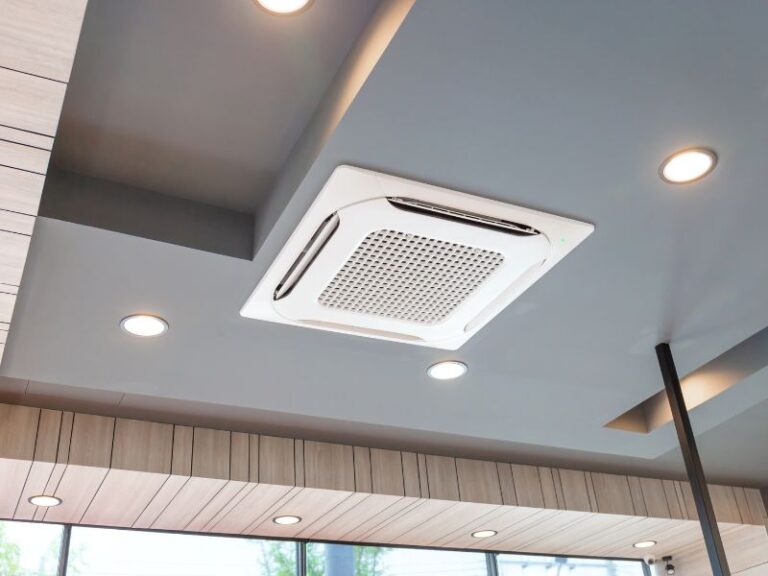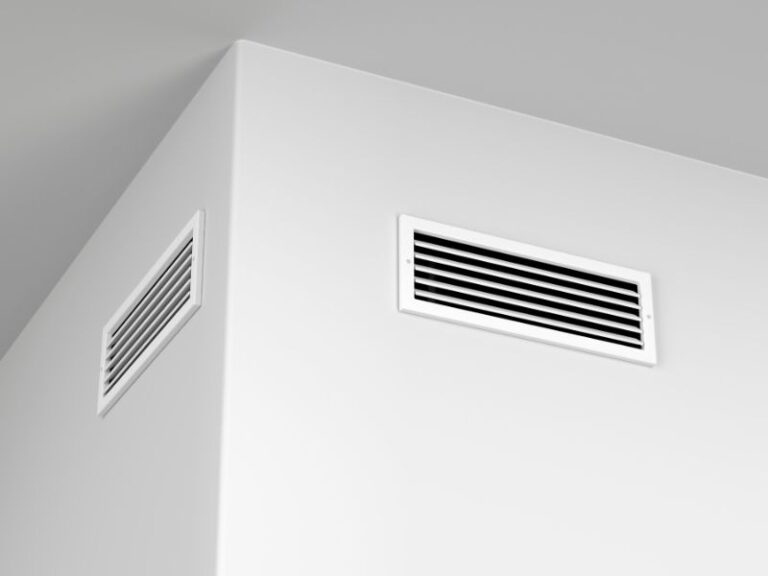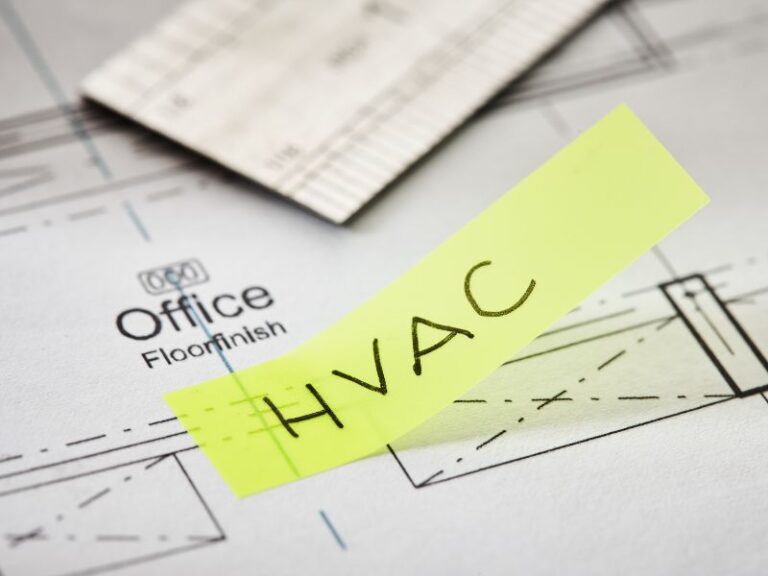Proper airflow and distribution are essential for maintaining the comfort and efficiency of your HVAC (Heating, Ventilation, and Air Conditioning) system. If air isn’t circulating properly throughout your building, your system will have to work harder, which can lead to inconsistent temperatures, reduced comfort, and higher energy bills. Ensuring proper airflow is key to ensuring your HVAC system performs optimally, maintains healthy air quality, and reduces energy consumption.
In this article, we’ll cover the basics of airflow and distribution in HVAC systems, the factors that affect these aspects, and the steps you can take to improve your system’s efficiency and comfort levels. We’ll also explain how tools like CoolCalc can help you design and size HVAC systems that provide effective airflow and distribution.
What Is Airflow in HVAC Systems?
Airflow refers to the movement of air within your HVAC system. Proper airflow ensures that air is distributed evenly across the building, allowing the system to maintain the desired temperature and humidity levels. In HVAC systems, airflow is typically measured in CFM (Cubic Feet per Minute), which indicates the volume of air the system can move in one minute.
Importance of Airflow in HVAC Systems:
- Comfort: Inadequate airflow can result in hot or cold spots within the building, leading to discomfort for occupants.
- System Efficiency: Proper airflow ensures the HVAC system operates at peak efficiency, using less energy to achieve the desired temperature.
- Air Quality: Proper ventilation and airflow help maintain indoor air quality by ensuring continuous air exchange, reducing the buildup of pollutants.
What Is Air Distribution in HVAC Systems?
Air distribution refers to how air is delivered from the HVAC system into different parts of the building. It involves the ductwork, vents, and diffusers used to distribute the air. The goal of proper air distribution is to ensure that every room or zone in the building receives the correct amount of heated or cooled air, improving comfort and system performance.
Importance of Air Distribution in HVAC Systems:
- Uniform Temperature: Proper air distribution helps maintain a consistent temperature throughout the building, preventing uneven heating or cooling.
- Energy Efficiency: By ensuring that the air is directed to the right spaces, you avoid wasting energy in areas that don’t require heating or cooling.
- Air Quality: Proper distribution of air ensures good airflow in areas that need fresh air, preventing the buildup of pollutants or excess moisture.
Factors That Affect Airflow and Distribution in HVAC Systems
Several factors can impact how well your HVAC system distributes and circulates air. Understanding these factors is essential for maintaining optimal airflow and comfort. Let’s look at some of the key aspects that can affect airflow and distribution:
1. Ductwork Design and Size
The design and size of your HVAC system’s ductwork play a major role in airflow. Poorly designed or improperly sized ducts can restrict airflow, resulting in uneven cooling or heating. Ducts that are too small for the airflow requirements will increase the system’s workload, leading to reduced efficiency and higher energy consumption.
- Solution: Proper duct sizing ensures that airflow is optimized throughout the system, and air is distributed evenly across rooms.
2. Duct Leaks and Blockages
Leaks or blockages in the ductwork can result in air loss and reduced airflow. Duct leaks can occur at the joints or connections, allowing air to escape and reducing the amount of conditioned air that reaches the intended rooms. Blockages from dirt, dust, or debris can also restrict airflow.
- Solution: Regularly inspect ducts for leaks and blockages. Sealing ducts and ensuring clean, unobstructed airflow will improve HVAC efficiency.
3. Air Filters
Air filters play a critical role in maintaining airflow. Dirty or clogged filters can restrict air movement, causing the system to work harder to push air through the ducts. Not only does this reduce the efficiency of the HVAC system, but it also leads to higher energy bills and can damage the system over time.
- Solution: Regularly replace or clean air filters to ensure proper airflow and system efficiency.
4. Vents and Diffusers
Vents and diffusers are the final components that direct conditioned air into the rooms. If vents are closed, obstructed, or poorly positioned, airflow will be restricted, leading to uneven temperatures and poor air distribution.
- Solution: Ensure that vents are not blocked by furniture or other objects. Adjust the placement of vents and diffusers to improve air circulation in areas that need it most.
5. System Balancing
Airflow must be balanced across all rooms or zones of the building. Over-supply or under-supply of air in certain areas can lead to poor temperature control and inefficient system operation. Balancing ensures that each zone receives the correct amount of air to maintain comfort.
- Solution: HVAC professionals can perform system balancing by adjusting the airflow to different areas of the building, ensuring optimal temperature regulation and energy efficiency.
How to Ensure Proper Airflow and Distribution in Your HVAC System
To ensure optimal airflow and distribution in your HVAC system, here are several key steps you can take:
1. Regular Maintenance
Regular HVAC system maintenance is essential for keeping the airflow and distribution at optimal levels. Key tasks to perform include:
- Cleaning and replacing filters to avoid airflow restrictions.
- Inspecting and sealing ducts to prevent air leaks and blockages.
- Checking refrigerant levels to ensure the system is operating efficiently.
- Cleaning the coils to maintain efficient heat transfer.
2. Proper Duct Design
Proper duct design is essential for maintaining airflow. This includes selecting the appropriate duct size, layout, and material to reduce friction and air resistance. Zoning systems can be used to direct airflow more efficiently to different areas based on occupancy or usage.
3. Use of Airflow Optimization Technologies
Technologies like variable-speed fans and smart thermostats can help optimize airflow by adjusting fan speeds and controlling air distribution based on real-time needs. These technologies ensure that air is distributed effectively while also conserving energy.
4. Upgrade to Energy-Efficient Components
Upgrading to energy-efficient components such as high-efficiency air handlers, variable-speed compressors, and smart vents can improve both airflow and energy efficiency. These upgrades will help reduce energy consumption while ensuring that airflow is properly distributed across the building.
5. Professional System Design and Sizing
When designing or upgrading your HVAC system, it’s important to properly size the system to match your building’s requirements. Oversized or undersized systems can lead to poor airflow and inefficient operation. Using tools like CoolCalc for cooling load calculations ensures that the HVAC system is the right size for the building, improving both airflow and overall system performance.
Conclusion
Proper airflow and distribution are crucial for ensuring that your HVAC system operates efficiently and provides consistent comfort throughout your home or commercial space. By maintaining clean ducts, ensuring proper system sizing, and performing regular maintenance, you can optimize the performance of your HVAC system and reduce energy consumption.
.




